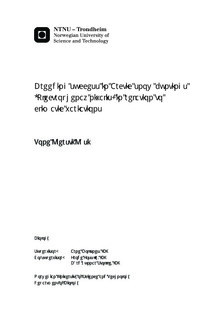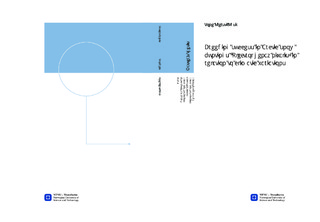| dc.contributor.advisor | Moksnes, Arne | nb_NO |
| dc.contributor.advisor | Fossøy, Frode | nb_NO |
| dc.contributor.advisor | Stokke, Bård Gunnar | nb_NO |
| dc.contributor.author | Kåsi, Tone Kjersti | nb_NO |
| dc.date.accessioned | 2014-12-19T13:12:47Z | |
| dc.date.available | 2014-12-19T13:12:47Z | |
| dc.date.created | 2013-01-18 | nb_NO |
| dc.date.issued | 2012 | nb_NO |
| dc.identifier | 589672 | nb_NO |
| dc.identifier | ntnudaim:6779 | nb_NO |
| dc.identifier.uri | http://hdl.handle.net/11250/245129 | |
| dc.description.abstract | The ongoing global warming is especially pronounced in the arctic, and it is therefore important to investigate the effect of these changes on arctic ecosystems. In this study the Snow bunting (Plectrophenax nivalis) breeding in Spitsbergen, Svalbard was used as a model species to investigate how the climatic variations are affecting avian reproduction. Both big scale climatic parameters and local weather variables were included in an analysis of how these factors affected snow bunting breeding success. It turned out that both big scale and local variables were important. Locale temperature and wind was important for time off breeding. Temperature, precipitation, winter North Atlantic Oscillation (NAOw) and winter Arctic Oscillation (AOw) were important for number of fledged chicks, and wind and air pressure were important for growth rate. | nb_NO |
| dc.language | eng | nb_NO |
| dc.publisher | Institutt for biologi | nb_NO |
| dc.subject | ntnudaim:6779 | no_NO |
| dc.subject | MBI Biologi | no_NO |
| dc.subject | Økologi | no_NO |
| dc.title | Breeding success in Arctic snow buntings (Plectrophenax nivalis) in relation to climatic variations | nb_NO |
| dc.type | Master thesis | nb_NO |
| dc.source.pagenumber | 33 | nb_NO |
| dc.contributor.department | Norges teknisk-naturvitenskapelige universitet, Fakultet for naturvitenskap og teknologi, Institutt for biologi | nb_NO |

